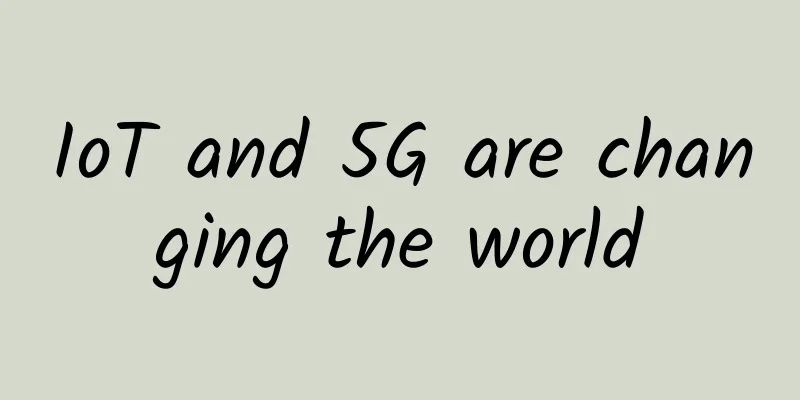IoT and 5G are changing the world

|
By 2025, there will be 5 billion cellular-connected devices, unlocking unprecedented potential. As 5G becomes a reality, coupled with artificial intelligence and edge computing, this means more than just a small leap in the efficiency of cellular technology. Ericsson examines the impact of this change in the study "Connected Industries - A guide to successful digital transformation for your enterprise." changeReinvent yourself to keep pace with digital competitors and win business. Being first to market with digital products can make a huge difference in gaining market share. The vast amounts of customer information captured provide OEMs with insights they can use to improve products, get closer to customers, and maintain a competitive edge. In addition to regulatory compliance, especially in certain industries such as utilities and automotive, OEMs also need to meet ever-increasing safety and efficiency standards—and ensure that their products, services, and business processes meet these demands. Business considerationsUse digitalization to increase productivity and minimize inefficiencies. Productivity and efficiency are the main drivers of most IoT projects today. For example, with smart meters, utility companies can save up to $200 per meter per service visit because technicians don’t have to be on-site to read or repair meters. While digitalization helps companies streamline operations and face competitive cost pressures, information about how their products and services work and how customers use them can help improve service quality, active customer engagement, and personalization. SustainabilityReduce consumption and promote a smart and sustainable environment. More and more companies are committing to the United Nations Sustainable Development Goals in response to the public's growing expectations on environmental and social issues. For them, digital transformation plays an important role in taking social and ecological responsibility in addressing global challenges. In logistics, the Internet of Things is helping to reduce global food waste from farm to table by 30%, while in the automotive industry, connected safety cameras enable car manufacturers to reduce collisions by up to 20%. Mercedes Benz CaseWhen Mercedes-Benz designed its new factory in Sindelfingen, the company wanted to replace its traditional assembly lines with automated driverless transport systems and increase the efficiency and flexibility of its production lines. To achieve these goals, Mercedes-Benz knew it had to introduce innovative technologies. The car manufacturer has partnered with Telefónica Deutschland to build the world’s first 5G mobile network for automotive production. The solution is an Ericsson private network with 5G Radio Dot System, which enables high-performance coverage of 20,000 square meters within the business premises and will be expanded to every 220,000 square meter facility. All production systems and machines in the newly built factory are connected and operated via a secure 5G network, which has gigabit data rates and extremely low latency when processing large amounts of data. |
<<: How to ensure the security of 5G wireless networks
>>: Economic uncertainty increases cybersecurity risks
Recommend
Google Fiber: 5 Gbps and 8 Gbps services coming early next year
Google Fiber will launch symmetrical 5Gbps and 8G...
RAKsmart server flash sale starts from $30/month, cluster server starts from $142/month, US/Japan/Korea/Hong Kong data centers
In addition to the flash sales on VPS and cloud s...
GreenCloudVPS Kansas node is online, 2G memory package starts at $15 per year
GreenCloudVPS has launched its 30th data center p...
2018 Trend Forecast and Future Outlook
1. About safety 1. Connected cars are more than j...
5G may disappoint consumers because it has no other advantages except fast speed
Less than four years after the issuance of 4G lic...
Buildings are finding ways to incorporate 5G into IoT networks
The long-awaited 5G technology has finally arrive...
Ruishu Information was once again selected as a cloud security example vendor in Gartner's "2022 China ICT Technology Maturity Curve Report"
In July 2022, Gartner, a global authoritative IT ...
2017 World Robot Conference concluded successfully. We look forward to seeing you again next year.
[51CTO.com original article] On August 27, the 5-...
Sharktech: 1Gbps unlimited traffic server starting at $79/month, Los Angeles & Denver data centers, 60Gbps high defense
Sharktech has no special offers recently, but has...
The first quarter of the three operators: China Unicom turned around, China Mobile slowed down, and the pattern remained unchanged
On the 27th, China Telecom released its first qua...
SD-WAN (Part 2)
The previous article "Things about SD-WAN (P...
CloudCone: $14/year KVM-512MB/10GB/3TB/Los Angeles data center
CloudCone has launched a flash sale for 2021, off...
80VPS: US 8C cluster server monthly payment starts from 800 yuan, Hong Kong 8C cluster server monthly payment starts from 1000 yuan
Recently, some readers asked about cluster server...
Gcore: Khabarovsk/Vladivostok KVM from 1.08 Euros per month, 488M memory/8G hard disk/288G monthly traffic
G-core (gcorelabs) has been shared several times ...
HostYun: 25 yuan/month KVM-1GB/10G SSD/500GB (including CN2)/Korea VPS
Let's take a look at HostYun's informatio...









